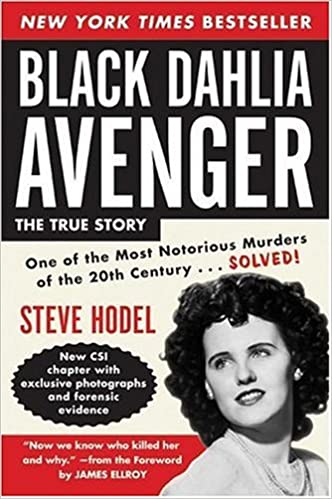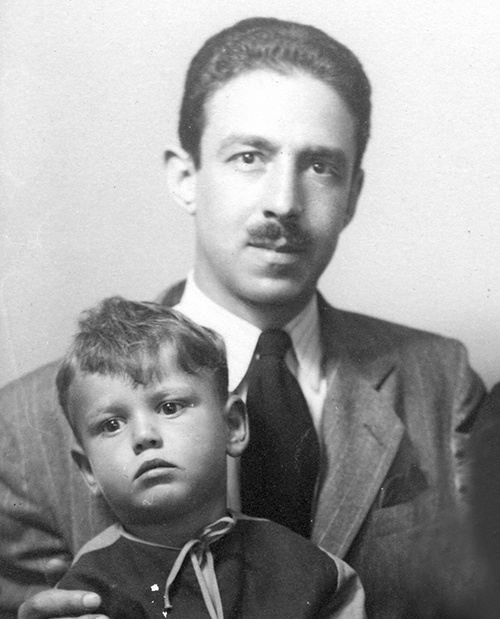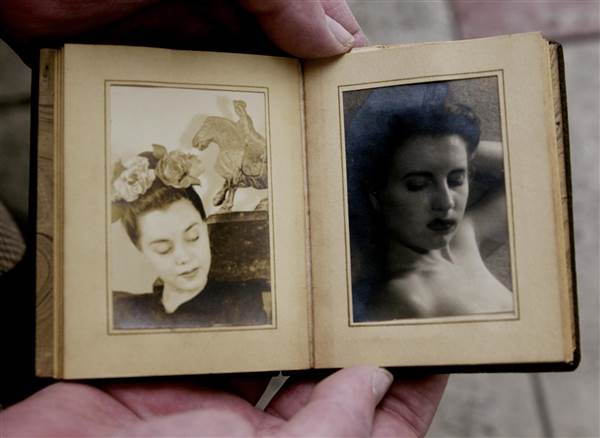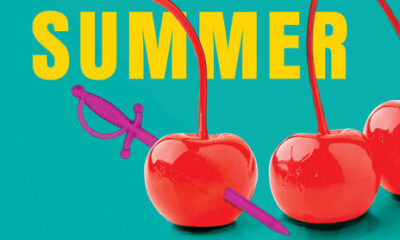
True Crime Studies: Black Dahlia Avenger, it’s more blind accusation than actual theory
More Videos
Published
4 years agoon
By
Rachel Roth
Why are there so many books about the Black Dahlia? Every couple of years brings a new one to light and they all have their own theories about who done it and from what I can tell, none of them match. One of the worst, however, is Steve Hodel’s Black Dahlia Avenger published in 2003, in which he accuses his own father of being the murderer. It’s a book that is as disjointed, melodramatic, entitled, and self-pitying as most of the Hodel family. If you haven’t heard of Steve Hodel, just know that he is the boy who cried murder. The king of the “Daddy Did It” genre. He’s not the pioneer though, that honor goes to Janice Knowlton who popularized it with her own Black Dahlia book, Daddy was the Black Dahlia Killer.
Steve Hodel went way beyond that though. He also accused his father of being the Zodiac, the one behind the “Lipstick Murders” (supposedly solved in 1946) and the “Jigsaw Murderer” of 1967. Which means, either Dr. George Hodel had an awful lot of free time, or his son just really loves to point the finger. Any believable theory offered in Black Dahlia Avenger is discredited by these continuing accusations.
Not that the book needed any of that to be discredited. Black Dahlia experts have debunked the book and all its presented “evidence” many times.
Black Dahlia Avenger is a book that tries so hard to be taken seriously. It reeks of desperation, biting off more than it can chew. For starters, Hodel is not a very good writer. Which wouldn’t be a problem if he didn’t spend so much time jumping paragraphs by separating multiple sections with subheadings as if he’s writing an essay. The chapters all feel like sections of an incoherent Wikipedia page.

Most of this appears in the many “investigation” sections, which are all very disjointed. They appear and disappear sporadically throughout the book as Hodel breaks away to, more or less, whine about his childhood. This is honestly what really bothered me about Black Dahlia Avenger. Hodel inserts details that have nothing to do with the case in which he’s discussing. Most of this is meant, I think, to prove Dr. George Hodel’s abusive, controlling personality, but fails to do so.
None of it is necessary, and not only is it unnecessary, but it also contradicts some of Hodel’s later claims. One example is the claim that his father’s unseen and secret abuse turned his mother into a depressed alcoholic. Yet in her backstory, he admits to his mother being somewhat of a party girl who suffered from bouts of depression and drank a lot while married to her first husband. He also briefly mentions his father’s other wives, none of whom suffered the same “damage” when he divorced them. One even went on to become a Philippine Congresswoman.
Black Dahlia Avenger
On January 15, 1947, Elizabeth Short, also known as the Black Dahlia, was found in a vacant lot savagely mutilated, severed at the waist and completely drained of blood. There were cuts on her thighs and breasts and her face had been slashed from the corners of her mouth creating a “Glasgow smile.” The cause of death was determined to be hemorrhaging from lacerations to her face and shock from blows to the head and face. It was a onetime event with no murder like it to come before or after, and most of the leads went cold.
Jump to the year 1999 as retired LAPD homicide detective Steve Hodel learns of his father’s passing. His father was the prominent doctor George Hodel who was well known among the Hollywood elite. He treated women for venereal disease, including many actresses. They had a fractured relationship and were just starting to reconnect after so many years. As part of the mourning process, Hodel goes to his father’s house to visit his widow June and this is where things start to unravel.
Hodel is very odd in regarding June. She is quiet and monotone, as many people would be after their spouse dies, yet he seems genuinely confused about this behavior. His bewilderment to June is worded as such:
“She was hesitant, secret, aloof and cautious with me. Was this an Asian cultural response to dealing with grief that kept mourners from sharing emotions? I’d never seen it before, particularly when as a P.I. I worked with my Japanese colleagues on criminal cases. Maybe it was only specific to widows. I didn’t know, but I also sensed there was something deeper- and it didn’t have anything to do with grief.”Black Dahlia Avenger pg. 36-37
God forbid a woman doesn’t want to socialize with her dead husband’s grown son who she barely knows just days after becoming a widow. June (probably to get him off her case) then hands him a box of family photos that belonged to his father and it’s what’s in the box that cracks the case. (Cue Phantom of the Opera music) Inside is a picture of Elizabeth Short! But not really.
Among the pictures are two photographs of a young woman with black hair sitting in intimate poses. Hodel believes her to be the late Elizabeth Short even though she looks nothing like her. Other than the fact that they’re both white women with dark hair, Short and the woman in the two photos don’t look anything alike. Apparently all white women look the same to Steve. Short’s own sister thought so when she saw the photos sometime later.
“The first thing I noticed was that [it] was definitely not Betty. She never wore flowers all over her head only one on her ear. She always loved Hawaii and I think it made her think of that and Dorothy Lamour.”Larry Harnisch from Heaven is Here

This is the grand piece of evidence and the rest isn’t much better. Contradictions, random accusations, and “clues” that Hodel magically links to his father. Now, I will say, that when the book actually focuses on Elizabeth Short, it’s not bad. When Hodel stops reciting childhood memories that offer nothing to his theory, we’re reminded of what this book is supposed to be about: the Black Dahlia.
Unfortunately, Hodel is not very good at tieing it all together. Short’s final few months of life are recounted through eye-witness accounts, but they don’t follow any pattern. Some aren’t even in order. He just dumps it all down and expects the readers to craft the timeline themselves.
Tamar and Root of Evil
There are multiple sections in Black Dahlia Avenger that deal with George Hodel’s daughter, the author’s half-sister, Tamar Hodel who accused her father of molesting her when she was 14 in 1949. Tamar is Hodel’s centerpiece in debouching his father’s character, but anyone who knew anything about Tamar would have their doubts about her integrity. There are many indications that she lied after becoming angry with her father over a personal matter. She also accused over a dozen classmates, male neighbors, and family friends of raping her.
She is dealt with in detail in the podcast, Root of Evil, where her own children admit to how manipulative she was.
Tamar is interviewed in Black Dahlia Avenger but nothing she says makes sense. I don’t know if Hodel put words into her mouth or if Tamar just doesn’t know what she’s talking about. One glaring error I couldn’t help but find humorous was when Tamar has a “memory” of her father naming one of her dolls Elizabeth Anne while laughing manically. She then sits back in shock at the realization that the Black Dahlia’s full name was ELIZABETH ANNE SHORT. Except that it wasn’t. Elizabeth Short didn’t have a middle name. The name “Anne” was included by accident by the LA Times during the 1970s. Short’s mother later corrected this fact and testified that her daughter never had a middle name.
Honestly, the Root of Evil podcast makes a much better case for Dr. George Hodel’s guilt. It has a few holes but it’s much more believable.
Verdict
If you want to read up on Black Dahlia, do yourself a favor and skip this book. I did not go into this with an impenetrable preconceived theory about the case. I have my own theory about who did it, but I was open to considering whatever argument Hodel had to offer, unfortunately, the story he’s crafting feels like a soap opera.
In simple terms, Black Dahlia Avenger lacks common sense. It’s also just plain bad. As a closing point, I feel the need to point out that despite Steve Hodel’s claim that his father was “the prime suspect”, Dr. George Hodel was actually one of the narrowed down 21 suspects, most of whom were quickly eliminated. The real prime suspects were actually Leslie Dillon and Walter Bayley.

Rachel Roth is a writer who lives in South Florida. She has a degree in Writing Studies and a Certificate in Creative Writing, her work has appeared in several literary journals and anthologies. @WinterGreenRoth

You may like
1 Comment
Leave a Reply
Cancel reply
Leave a Reply
This site uses Akismet to reduce spam. Learn how your comment data is processed.
Released in May of this year, You Like It Darker is the latest short story collection by Stephen King.
In the afterward King says. “You like it darker? Fine, so do I.” This sort of declaration might lead one to believe that this collection is going to be darker than his others. That we might reach depths of horror that we haven’t yet seen before, even from the King himself. This is a promise that this book does not deliver on. But that isn’t to say that You Like It Darker wasn’t still a damn fine read.
The good stories
The first story in the book, Two Talented Bastids, started everything out on the right foot. This is the story of a man named Mark. Mark looks after his father, who he lovingly calls Pop. Pop is a famous author His best friend, Butch, was a famous painter before he passed.
Everyone wants to know how two men who are lifelong friends suddenly become famous in their forties. But as far as the men in question are concerned, they’re just two talented bastids. That is, until Pop dies, and leaves a story to explain to Mark how one fateful hunting trip changed their whole lives.
Another tale I appreciated was Rattlesnakes. This is a sequel to the classic King novel, Cujo. If you haven’t read Cujo, this will spoil the ending for you. I, for instance, had not read Cujo.
Rattlesnakes is about Vic Trenton. A recent widower, he’s traveled to Florida to heal from his losses. There, he meets a lovely woman about his age (old) who appears to be not quite right in the head. She walks around around town like Delta Dawn, not with a suitcase in her hand but wheeling a twin stroller. Years ago, her twin sons were killed by rattlesnakes. And she’s never really gotten over that. So she wheels around the stroller and pretends they’re still in there. At least, everyone assumes she’s pretending.
Easily my favorite story in the book was Danny Coughlin’s Bad Dream. Imagine if you had a prophetic dream, but just one. That’s exactly what happens to Danny. He dreams of the location of a murder victim. When he goes to the location, which he’s never been to before, he finds the poor woman in question. Of course, the police find this extremely suspicious. And one detective grows so suspicious that he starts taking matters into his own hands.
The bad stories
Of course, not all the stories can be great. One that I especially disliked was Finn. This is the story of a young man with bad luck. I mean, terminally bad luck. So bad that he’s kidnapped in a case of mistaken identity.
This story just didn’t have a satisfying ending. Nor did it have a satisfying middle. There was just no real conclusion.
Another story that missed the mark was On Slide Inn Road. It’s the story of a family on a car trip to see a dying sister when they’re overtaken by some rough people outside of an old abandoned inn. This story also doesn’t seem to have any sort of cohesive storyline. It’s just the story of a family having a really bad day. It doesn’t go anywhere.
Overall, this was a collection that shows King’s patterns. He writes over and over about men who have lost their wives and their sons. Men who have survived their families and been left alone. Most of the main characters in these stories fall into that category. Perhaps in that way, these stories are darker than the ones King has written in the past. At least for him.
Fans of King’s work will love this book. I loved this book. I loved catching up with the lonely widower from Cujo. I loved meeting monsters who might or might not have crawled out of the back of a Buick. And while none of these stories were dark enough to disturb my sleep, they were good enough to keep me up reading late.

As summer approaches, there’s nothing quite like reading a book with warm campy vibes. It’s especially true if you’re lying on a sunny beach. Nicole M Wolverton’s A Misfortune of Lake Monsters matches that picture perfectly. It’s described as a creature feature with a Stranger Things-esque friend group.
Although set in modern times, I found the story felt like something out of the 80s (in a good way). Character dynamics reminded me of The Goonies and IT while the narrative combined just the right amount of adventure, romance, and horror to bring out nostalgia and comfort at the same time. Anyway, let’s dive (hehe) in!
Plot
Lemon Ziegler has one aspiration in life – to become a vet. Unfortunately, that would involve leaving her hometown, which is a problem as she is obligated to continue the family business. While such a situation is not out of the ordinary, the business itself definitely is. Lemon must impersonate Old Lucy, the town monster (a nice homage to the Loch Ness myth).
The decades-old legend about this creature swimming around in the lake is keeping tourism in the town alive. Because of this, poor Lemon has no other choice but to follow in her family’s footsteps. She keeps this secret from everyone, including her best friends, Derrin and Troy. The latter is harbouring feelings for Lemon that are stronger than friendship. As he is a teenage boy though, he is too afraid to make a move (much to Darrin’s enjoyment).
Things take an unexpected turn when a real monster shows up, hungry for blood. As one could guess in these kinds of stories, no one believes Lemon at first. This only allows the creature to claim more victims (and yes, I feel the saddest about the poor dog). Once the adults finally decide to do something, it alerts the FBI, which makes the situation more difficult for our gang. Unsurprisingly, they are the only ones who can stop the monster from wreaking move havoc.
In the midst of the riveting adventure, we also see Lemon go through a character arc. She stands up to her grandfather, allowing him to see her as an adult for the first time ever. There’s also the blossoming of her and Troy’s romance. The pair awkwardly navigate the transition from friendship to romance in an adorable way. At its heart though, this novel is about family, blood or otherwise, and how strong connections can sometimes be the only way to save your life. After all, who could defeat a multidimensional monster by themselves?
Overall thoughts
I had a blast with A Misfortune of Lake Monsters as it combined all the components of making an effective adventure story with enough heart to make you care about what happened to the characters. They are sympathetic yet entertaining and their relationships feel organic down to the dialogue that, while a tad cheesy, is oozing with charisma.
The reasons I am giving it four stars are more individualistic. I tend to go for a darker type of thriller/horror and this story, although not short of gore, ultimately steers in a more heartwarming direction. It’s something I anticipated knowing the age range and found fitting with what the narrative was going for.
I also would have liked a slightly different as I feel the story entered more of a sci-fi subgenre in the last third. While that’s fine overall, it is not my first choice of horror. Considering these things are more down to my personal preferences as a reader, I would absolutely recommend this book. I’m excited to see what the authors does next!
 (4 / 5)
(4 / 5)
Dear readers, the time has come for some answers. At least, that’s what the teaser for the new installment of Monastery says. As usual, it delivers what it promised and more as we untangle the past and its connection to the present. Without any further ado, let’s talk about it, shall we?
Plot
We start the episode with a blast from the past. Cassandra and Celeste (Nicole’s aunt and Arthur’s lover for those with short-term memory) are in the hospital because of Celeste’s pregnancy complications. Cassandra promises her former best friend that she will ruin her all the while we find out Francis’s real parentage. The picture is finally starting to come together.
As we are back in the present day, our group is more scattered than ever. Thomas is his father Walt’s prisoner while David is still running around looking for Rocky. Fred on the other hand is just looking for any place to crash, homelessness and all. Our dethroned beauty queen Nicole is hiding away from everything – including her shame. Last but not least, little Henry is spending his time taking care of Nana Beth. Guessing that is his redemption for trashing all the evidence of Albert’s murder gathered so far. Although frustrating, his actions are understandable – the poor kid is traumatized and just wants some peace.
George Turner’s murder is still an active investigation. It is obvious that this cover-up wasn’t nearly as successful as Albert’s. I sure as hell hope that Francis gets his comeuppance sooner rather than later. Not particularly because Turner didn’t deserve it but so the rest of the characters would be safe from him. Although as I’ve said before, his clear descent into sociopathic tendencies is kind of fascinating to watch.
We also get an interesting development in what so far has been a tiny background detail, which is the Monastery Werewolf. As the creature comes to visit Rocky, we find out our resident star dog considers it family. Not going to lie, it took me a few reads to understand what this means. Now I’m getting all sorts of ideas as to how the supernatural ties into the rest of the story.
Speaking of the supernatural, it is none other than Madame Witch who frees Thomas from his captivity. Well, her contribution is indirect as she sends his best friend Alfie to help instead. Although I’d say currently the two should set their dynamic status to ‘it’s complicated’. As soon as he’s free, Thomas is immediately back in his detective mode. For arguably the first time he gets some real answers as we find out the whole backstory of Albert/Celeste/Cassandra triangle. I won’t go into details as that trio deserve their own article but let’s just say it gives Cassandra a big ass motive for killing her husband. Not to mention the way she took Francis from Celeste was quite brutal to read.
We reach the lead-on for the grand finale as David and Henry are coming to free Rocky. This naturally comes with a condition – they must hand Francis the key they found during the investigation. Little do they know Nicole is already there being held at gunpoint. Oh, and Fred should also be around somewhere as he was sleeping there the night before. Thomas might be a little late to the party since he and Alfie are held a knifepoint by Rick (seems like a running theme here). Nothing good can come from this.
Overall thoughts
This episode does a perfect job of setting up the big finale. It reveals everything we need to know except the main question – who killed Albert? At this point, while it of course still matters, this story is so much more than that. It’s about all the mess that this family has got themselves into, how with each mistake they kept digging deeper, and how it took a whole new generation for all of that to come up to the surface. I can only hope our investigative gang will make it out alive…

More thoughts from the author:
1. Although a minor character in comparison, Walt strikes me as someone who’s there to represent the themes of Monastery – someone who will do horrible things in the name of family. What was your intention with his characterisation, especially considering he works for justice (aka the police?)
This is why I will always defend my decision to have a large cast, as opposed to most books – when you get even the slightest sense of fleshing out a minor character, it feels so rewarding. Walt, to me, takes the crown of “father of the year”, even if he does it by locking his son up in the bedroom. He is protecting his wife’s secret, protecting his son’s innocence, and doing so by going against his core ideals – i.e., a detective covering up a murder. He’s also based on a favourite uncle of mine, so it makes me happy to give him his moment to shine.
2. Something I thought of while writing this review – the cover up of George Turner’s murder seems to be a kind of juxtaposition as to how neatly Albert’s was since the police keep discovering evidence left and right (and how Francis doesn’t particularly seem to care). Was this intentional on your part?
It all adds up to plot convenience, and I have no shame in admitting that – Albert’s murder was so neatly covered up because I needed it to go unsolved for 14 years, whereas the reader knows who killed George, so there is no need for the cover-up to be well done.
As for Francis’ reaction to the murder, he started out anxious and paranoid after the fact, but he has grown into a state of not caring, which further depicts his descent into darkness – he knows he’s close to his goal (of finding the money and leaving his family), so there is a sense of invincibility taking over. He is stepping into his main villain energy and we are here for it!
3. Alfie has been yet another background character until now and yet he is the one who rescues Thomas. To me he seems like the friend who genuinely cares for Thomas and who gives him that reality check he sometimes needs to get out of his own head. Was that at least partially why you chose to bring him in for the grand finale?
Fun fact: Alfie was originally a series regular. However, halfway through writing the series, I realised I wasn’t using him as much as I’d wanted to, so I bumped him down to recurring. But the original plan always saw him and the other regulars coming together for the big climax, which is why he is in the fold. Alfie is someone who keeps Thomas grounded (if not humbled), since Thomas has the slight tendency to, well, think he’s better than everyone else. What’s coming up for them is one of the most exciting things I’ve ever written about.
4. Lastly, it’s not so much a question but rather a well done for how you crafted the Albert-Celeste-Cassandra dynamic! I was very invested despite knowing the outcome. Weirdly enough, while hating Cassandra for how she handled it, I sort of understood why she thought that Celeste deserved it? Either way, congrats for managing to craft these love stories in the midst of all the murdery goodness.
Thank you so much. As I’ve said before, romance is not my strong suit, but I do love a soapy triangle – and if it ends with gun violence, even better! The reveal of this mystery is probably my favourite sequence in the series so far.










nonpersonne
September 19, 2020 at 11:44 am
Agreed. Hodel recently consulted a medium to raise some spirit (presumably Beth Short’s). He’s gone on to accuse his father of also being the Lipstick Killer, BTK, etc. And those photographs are definitely NOT of Elizabeth Short.